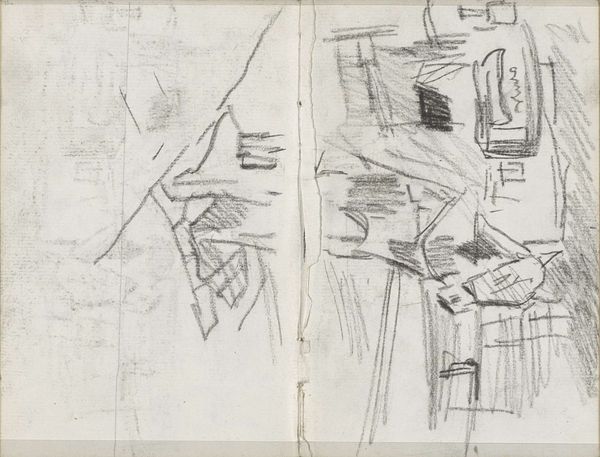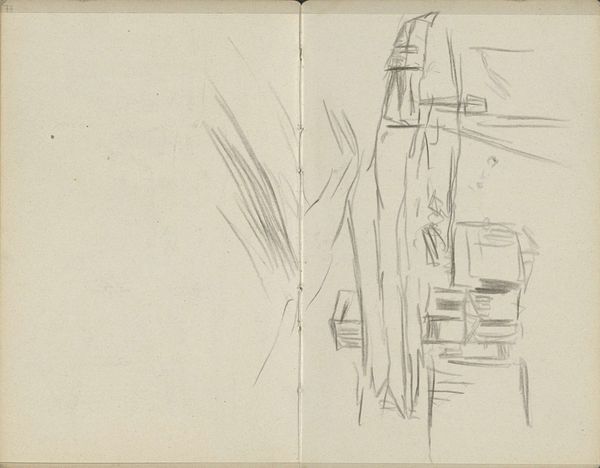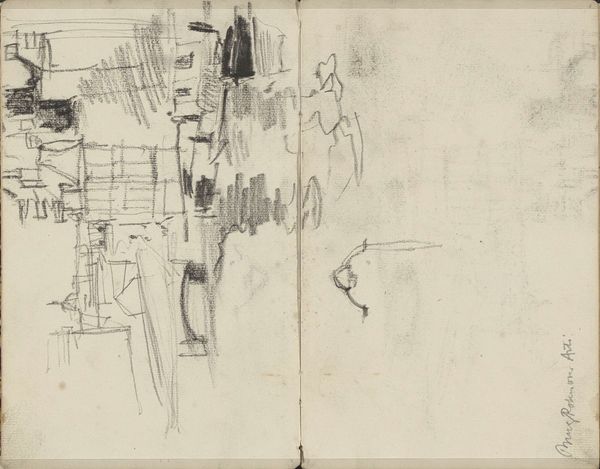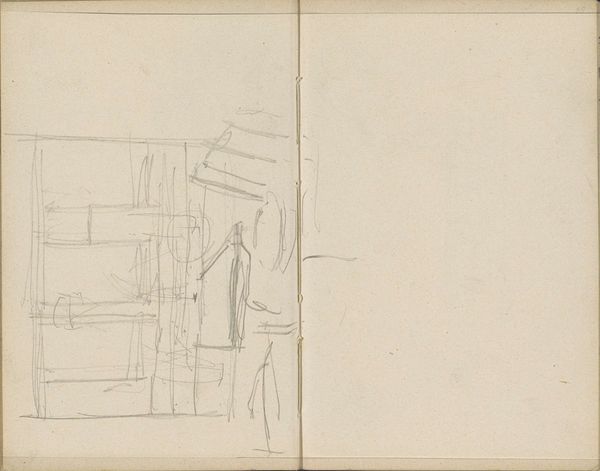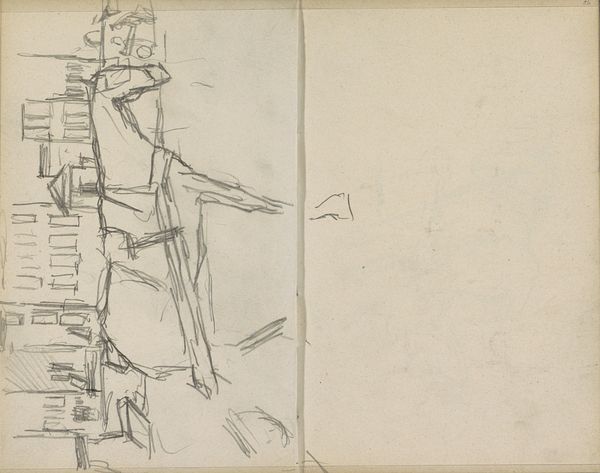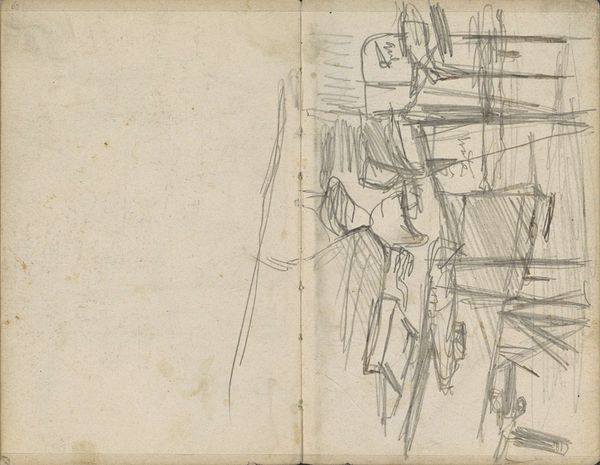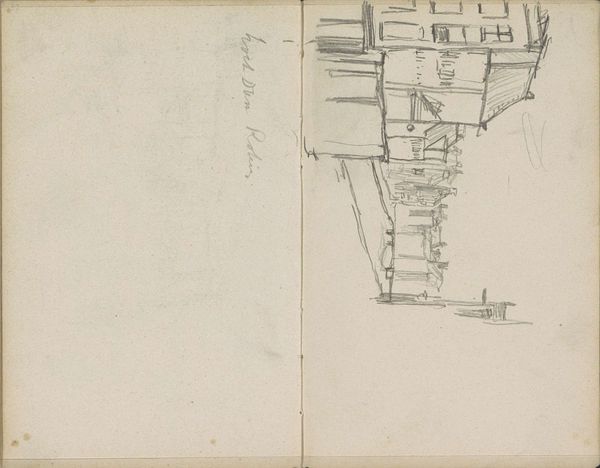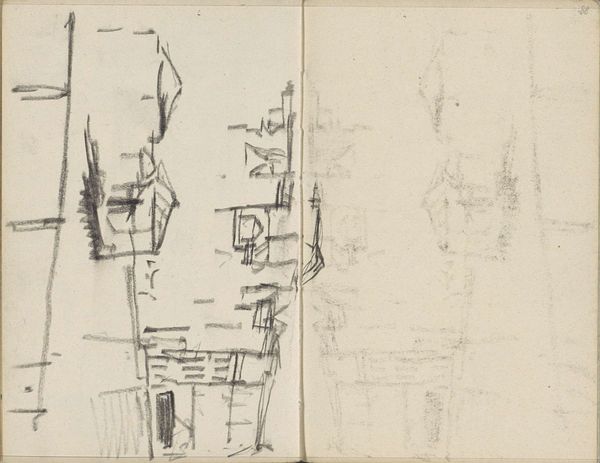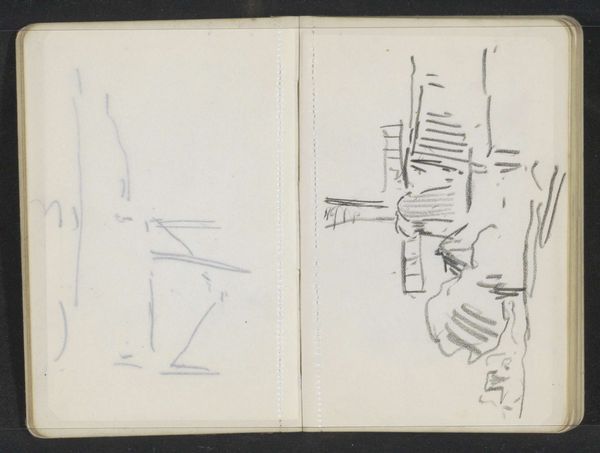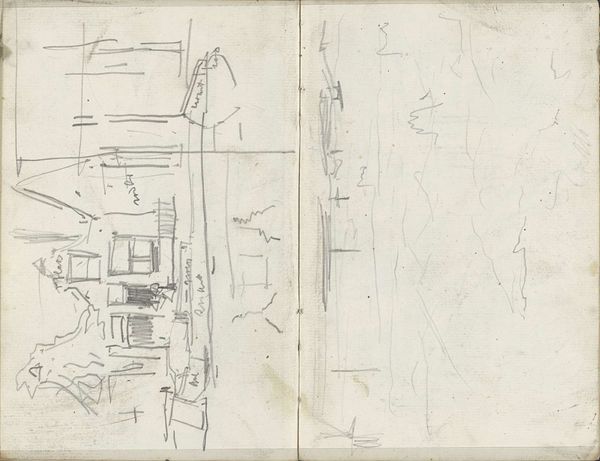
drawing, pencil
#
drawing
#
quirky sketch
#
dutch-golden-age
#
impressionism
#
hand drawn type
#
personal sketchbook
#
idea generation sketch
#
sketchwork
#
pen-ink sketch
#
pencil
#
sketchbook drawing
#
cityscape
#
storyboard and sketchbook work
#
sketchbook art
#
initial sketch
Copyright: Rijks Museum: Open Domain
Curator: Breitner’s "Gezicht op gebouwen, mogelijk te Amsterdam," created around the 1880s, is a quick pencil drawing. It appears to be a page torn from a sketchbook. Editor: The immediacy is what strikes me. The raw quality of the pencil strokes gives it a documentary feel, as if capturing a fleeting moment in the city. It’s very intimate. Curator: Considering Breitner's position within the Amsterdam Impressionism movement, it is probably just that: A quickly captured moment intended to become part of a future artwork. The paper itself, likely mass-produced, signals a shift towards readily available, inexpensive materials democratizing the artistic process. Sketchbooks became tools for observing the rapidly changing urban environment. Editor: I find the negative space just as compelling as the sketched lines. That emptiness throws into high relief the material act of sketching and it heightens my awareness that this cityscape is brought into being through this interaction between the artist, paper, and pencil. The image asks, “What and how do we see?" which links to social and economic progressivism. Curator: Absolutely. The composition reflects how the development and availability of synthetic pencils offered artists tools that mirrored industrial advancement. This new era enabled and reflected the swift changes that transformed the city, giving rise to views emphasizing modern existence, its pace, and its inherent impermanence. Editor: Do you believe he fully realized this sketch as part of a grander painting? Curator: It’s difficult to know for certain. Often artists retain studies and sketches for later incorporation. Perhaps its value resides as a self-sufficient document, proof of the dynamic processes of visual note-taking, artistic exploration, and Breitner's individual approach to capturing his surroundings. Editor: I think the sketch reminds us that seeing and representing are actions always subject to cultural and industrial conditions. Thank you for illuminating these observations. Curator: A valuable exploration, indeed. Considering the cultural lens informs its appreciation and legacy.
Comments
No comments
Be the first to comment and join the conversation on the ultimate creative platform.

